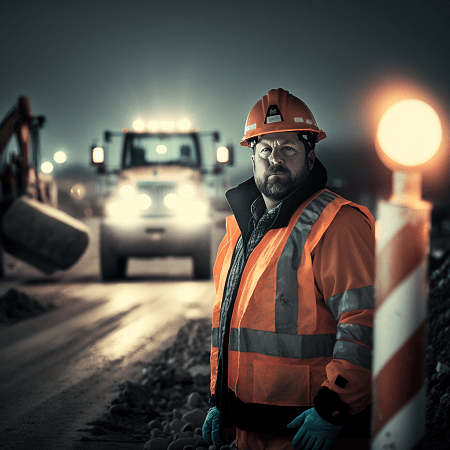Introduction
Flaggers play a critical role in ensuring the safety of motorists and construction workers on our nation’s roads and highways. Every day, these brave men and women put themselves in harm’s way to direct traffic, set up barriers, and perform other vital tasks that keep our roads safe and efficient. However, working in a work zone or as a flagger also comes with significant risks, which is why it’s crucial that all workers in these roles take the necessary steps to protect themselves and others.
In order to keep our roads safe and efficient, it’s crucial that all flaggers take the necessary steps to protect themselves and others. To ensure the safety of everyone involved in a construction zone, it’s important for flaggers to understand the traffic control plan, be aware of their surroundings, communicate effectively, follow established protocols, and be prepared for emergency situations. But beyond that, flaggers must also wear high visibility clothing, stay alert, be aware of the weather conditions, know when to stop traffic, and practice their skills. In the following 10-item checklist, we will go into more detail on these tips and provide additional guidelines for safe flagging.
- Always wear high visibility clothing: As a flagger, you are responsible for directing traffic in a construction zone and ensuring the safety of both the workers and the drivers. To be effective in this role, it is essential that you are easily visible to all those in the area. This means wearing clothing that is brightly colored and contains reflective materials. This will make it easier for drivers to spot you, even in poor visibility conditions.
- Understand the traffic control plan: Before you begin flagging, it is essential that you understand the traffic control plan for the work zone. This will include information about the location of the work zone, the type of work being done, and the specific traffic control measures that are in place. Understanding this information will help you to direct traffic effectively and ensure the safety of all involved.
- Be aware of the surrounding area: As a flagger, you need to be aware of your surroundings at all times. This means paying attention to the traffic, the workers, and the equipment in the area. This will help you to identify potential hazards and take action to mitigate them. It will also help you to direct traffic in a safe and effective manner.
- Communicate clearly and effectively: One of the most important aspects of flagging is effective communication. You need to be able to communicate clearly and effectively with drivers, workers, and other flaggers to ensure that everyone is aware of what is happening and what they need to do. This means using hand signals and verbal commands that are easy to understand and follow.
- Follow established protocols: When flagging, it is important to follow established protocols and procedures. These protocols will vary depending on the work zone and the type of work being done, but they will typically include guidelines for how to direct traffic, how to communicate with drivers and workers, and how to respond to emergency situations.
- Be prepared for emergency situations: As a flagger, you may be called upon to respond to an emergency situation. This could include a vehicle accident, a medical emergency, or a fire. To be prepared for these situations, it is important to have a basic understanding of first aid, fire safety, and emergency response procedures.
- Stay alert and focused: One of the most important things you can do as a flagger is to stay alert and focused. This means avoiding distractions and paying attention to your surroundings at all times. This will help you to identify potential hazards and take action to mitigate them.
- Be aware of the weather conditions: Weather conditions can greatly impact the safety of a work zone. As a flagger, it’s important to be aware of the weather conditions, such as rain, snow, or high winds, and adjust your flagging procedures accordingly.
- Know when to stop traffic: Knowing when to stop traffic is an important aspect of flagging. You should stop traffic when construction workers are in the road, when a vehicle is stopped on the shoulder, or when a vehicle is disabled and poses a safety hazard.
- Practice, practice, practice: Flaggers need to be well-trained and familiar with the procedures, so they can perform their duties safely and effectively. It’s essential to practice flagging in a controlled environment before working in a real work zone. This will help you to become familiar with the traffic control plan, understand the different hand signals and
Conclusion
Flaggers are essential for the protection of workers and motorists alike. Still, it can be an exceptionally dangerous job. By following the tips outlined in this article, workers can take steps to protect themselves from hazards and minimize the risk of accidents and injuries. However, it’s also important for employers to provide adequate training, supervision and safety equipment to their workers to create a safer working environment. Remember, safety is everyone’s responsibility. By working together, we can make our roads and highways safer for all.


